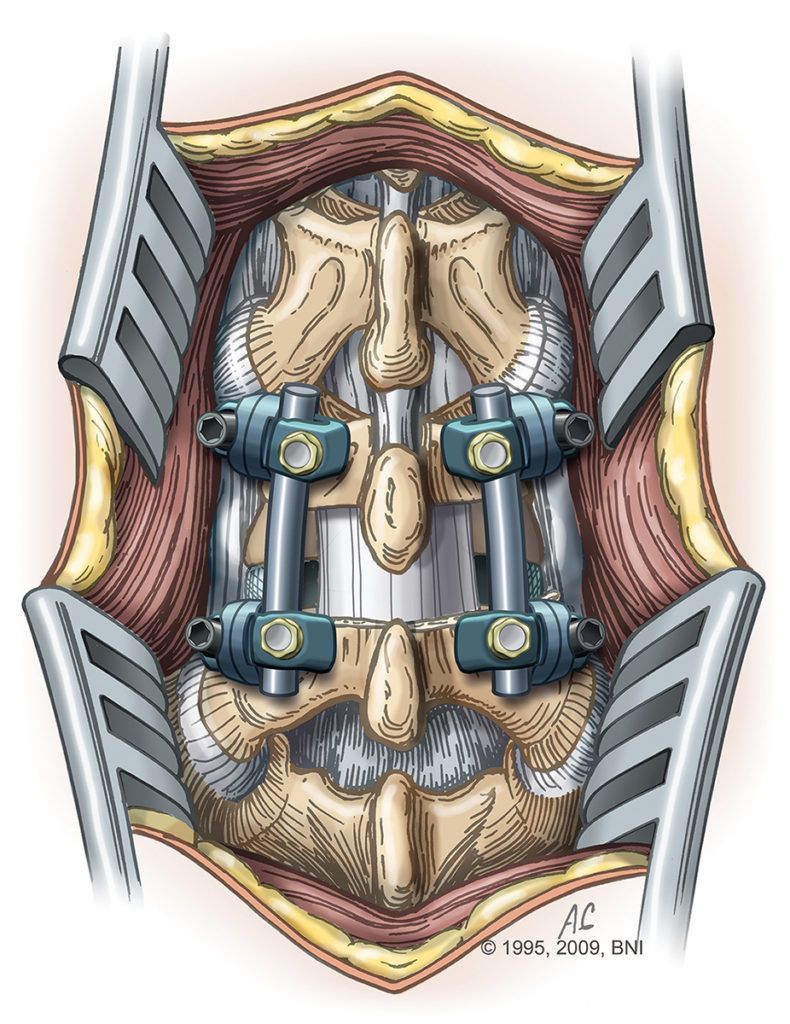
Spinal Fusion Surgery
What is spinal fusion surgery?
Spinal fusion is a surgical procedure that is performed to join two or more bones of the spine together, eliminating movement between them. These bones, called vertebrae, are normally separated by intervertebral discs, which enable movement.
To fuse two vertebrae together, a neurosurgeon places a type of bone graft in between them. The bone graft may be taken from another bone in the body (autograft), donated by another person (allograph), or made of synthetic bone-like materials. The body then heals the bone graft over several months, much like it would heal a bone fracture. The neurosurgeon may use instrumentation such as metal plates, rods, or screws to hold the vertebrae together while the bone graft heals.
There are different approaches for accessing the spine and placing the bone graft. The surgeon may approach the spine from the back (posterior), the front (anterior), or the side (lateral). The approach depends on the level of the spine that will be fused and other factors.
Minimally invasive spine surgery is an option for some spinal fusions. In these procedures, rather than cut through the muscles over the spine, the neurosurgeon makes a small incision and uses specialized instruments to push the muscle out of the way and access the spinal vertebrae to be fused. The smaller incision and minimal trauma to the muscle tissue may mean less pain and faster recovery.


What is Spinal Fusion used for?
The following spinal conditions may be treated with spinal fusion:
- Arthritis in the spine, such as spinal stenosis
- Fractures to the vertebrae
- Recurrent disc herniation in the lumbar spine
- Spinal deformities, such as scoliosis or kyphosis
- Spinal weakness or instability, which may be caused by infections or tumors
- Spondylolisthesis, a condition in which one vertebra slips forward on top of another
Am I a good candidate for Spinal Fusion Surgery?
You may be a good candidate for spinal fusion if you have spinal instability, weakness, or pain caused by one of the previously listed conditions. However, having one of these conditions does not necessarily mean you will need surgery. More conservative treatments such as physical therapy or pain medication may be effective.
As with any surgery, spinal fusion carries risks. A particular risk of this procedure is potential nerve damage. Beyond the immediate risks, spinal fusion changes the normal movement of the spine. This may place stress on levels of the spine adjacent to the fusion and accelerate wear and tear of the vertebral joints. Your neurosurgeon can help you decide if spinal fusion is right for you.



